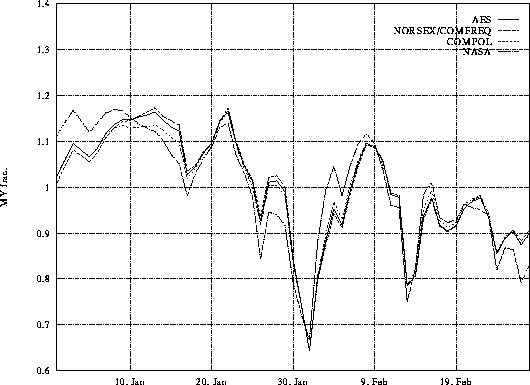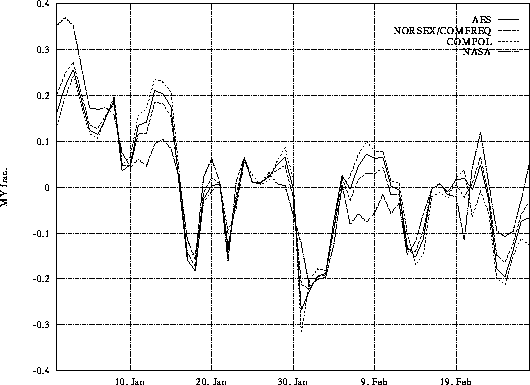
Table 4: Mean multi-year ice fraction in January and February 1993 (in %)
The multi-year ice fraction is calculated for all algorithms given in the previous sections. From equation 1 it is seen, that the multi-year ice fraction is undefined, when the ice concentration is zero. Most areas shown in Figure 4 contains some open water parts, in which the multi-year ice fraction is undefined. Because the multi-year ice fraction is non-linear, the mean value has to be calculated as the average over the individual pixels, so the approach taken here, is to only use pixels with ice concentrations larger than 30% in the calculation of the multi-year ice fraction. Therefore the open water area has been completely left out. The mean multi-year ice fraction in January and February 1993 is shown in Table 4

Table 4: Mean multi-year ice fraction in January and February 1993 (in %)
Also the daily multi-year ice fractions in the tie-point areas are plotted
in Figure 8 and 9.

Figure 8 Multi-year ice fraction in multi-year ice area in Jan/Feb 1993

Figure 9 Multi-year ice fraction in first-year ice area in Jan/Feb 1993
In Table 4 it is seen,
that in the MY and FY areas, the average multi-year ice fraction is very close
to the expected values (100% and 0%) for all algorithms. However, Figure 8
and 9 shows, that there are big variations
in both the MY and FY areas. These variations, which are almost equal in all
algorithms, are likely to be caused by changing ice conditions in the period
or geophysical influence with the same effect in all algorithms.
In the other areas, the exact multi-year ice fraction is unknown, but the two-month
average values are seen to differ less than 6% between the algorithms (Table
4 ). In the W/FY area, all algorithms gives negative values, which indicates,
that the calculation of the multi-year ice fraction is in error. Also in the
W/MY area the values are less than the expected 100%, and it seems like all
algorithms underestimate the multi-year ice fraction in these areas.
In the W/MY case, some first-year ice at the junction between open water and
consolidated ice may cause the underestimation.
This is tried avoided by making the area narrow around the ice-water junction, but
perhaps this has not been successful.
In the W/FY case, variations in the first-year ice signature may give rice to an
overestimation of the first-year ice content, and hence an underestimation of the
multi-year ice fraction.
The change in signature can be caused by the small distance to the open water areas,
where the geophysical influence is bigger than over consolidated ice.
The standard deviation on the multi-year ice fraction is given in Table 5.

Table 5 Standard deviation on multi-year ice fraction in January and February 1993
(in %)
It is seen, that the standard deviations on the multi-year ice fraction are similar in all algorithms and areas, and that it overall ranges between 7.6% and 17.5%. The main contributor to these rather large standard deviations are again believed to be changing ice or geophysical conditions in the period. The biggest standard deviation is again found in the COMPOL algorithm.
Tim Flintholm Fink<tff@emi.dtu.dk>